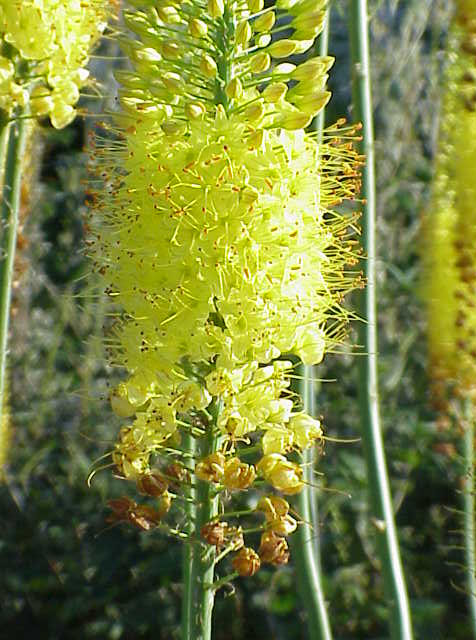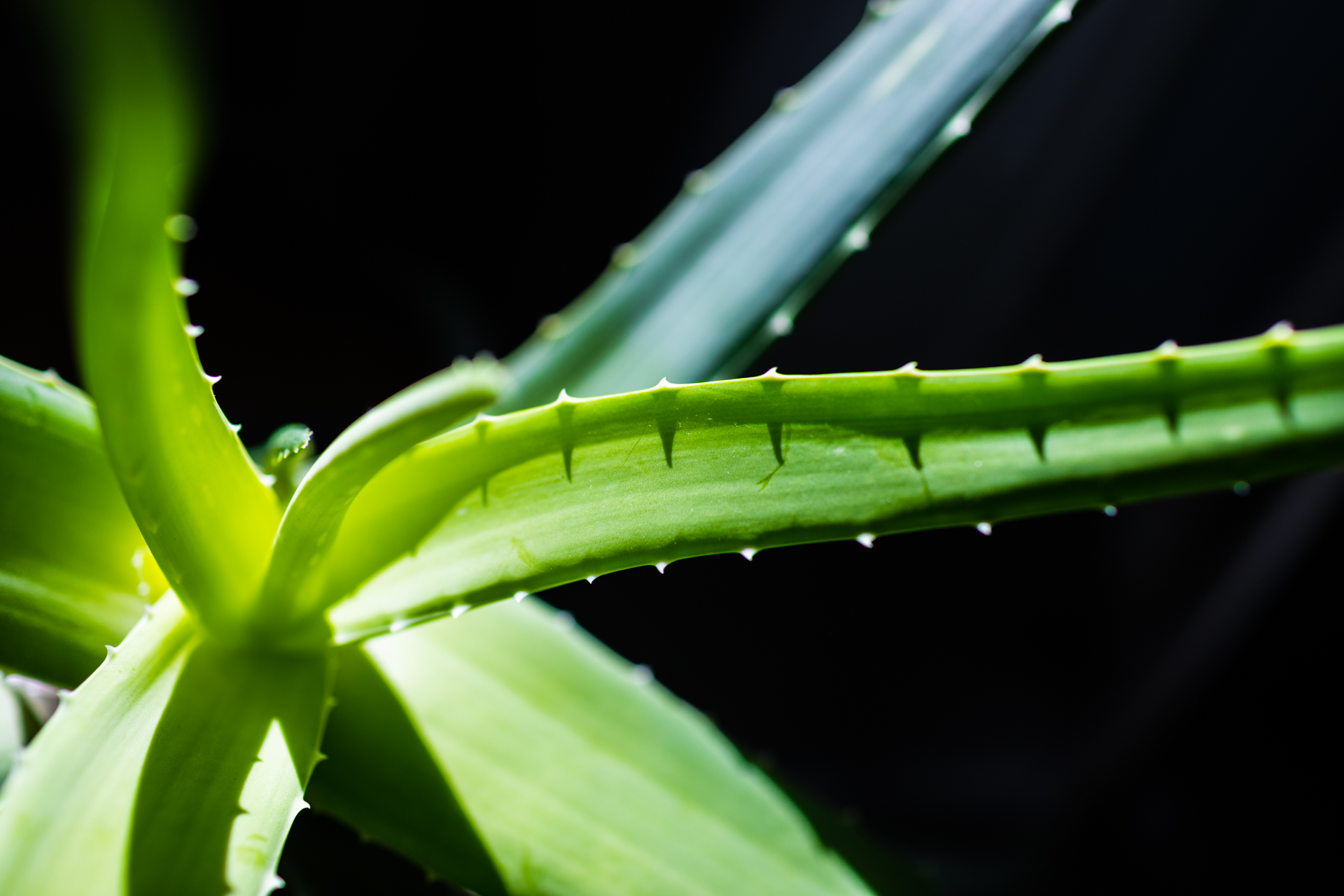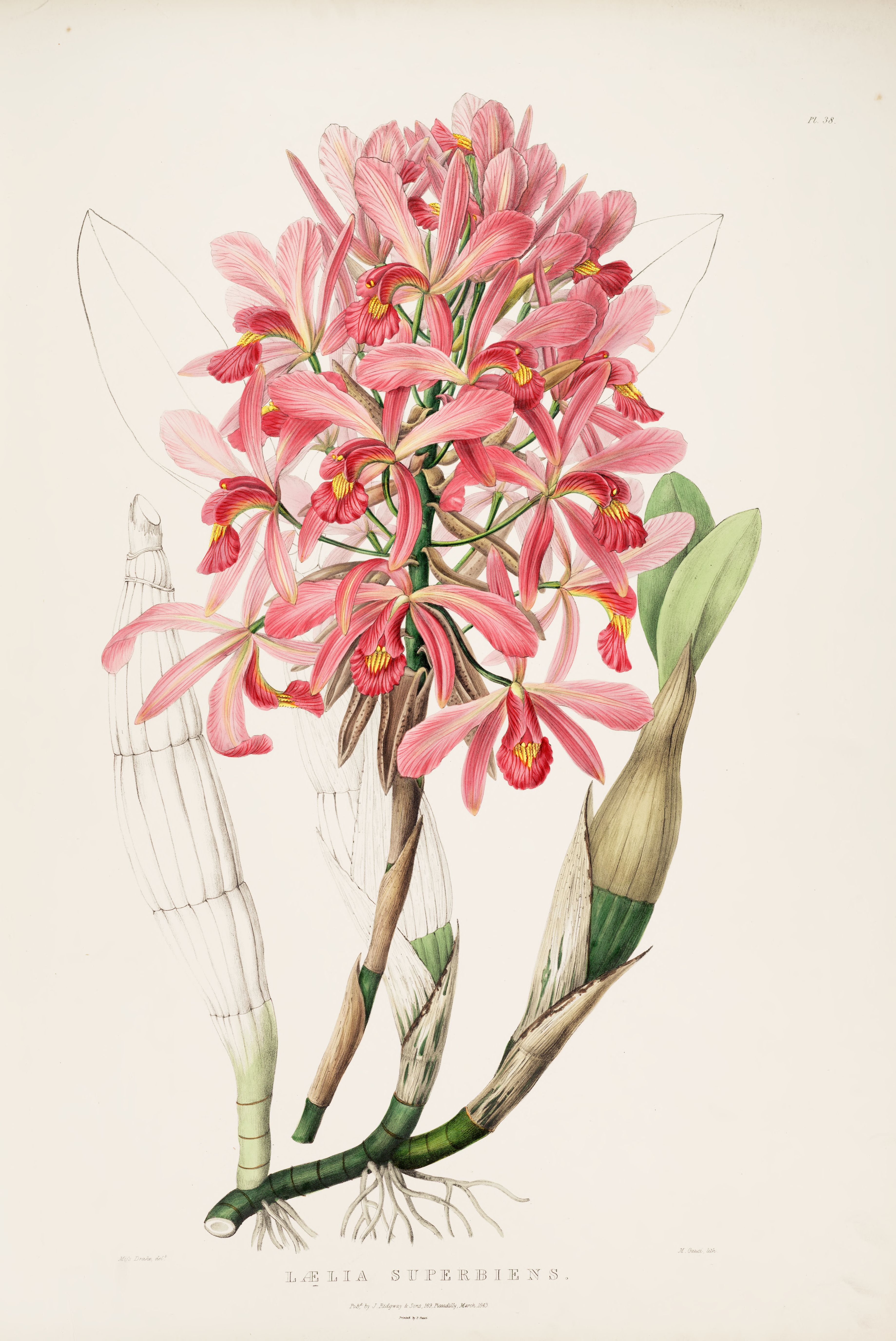|
Aloeae
Aloeae is a tribe of succulent plants in the subfamily Asphodeloideae of the family Asphodelaceae, consisting of the aloes and their close relatives. The taxon may also be treated as the subfamily Alooideae by those botanists who retain the narrower circumscription of Asphodelaceae adopted prior to the APG III system. Typically, plants have rosettes of more or less succulent leaves, with or without a distinct stem. Their flowers are arranged in racemes and tend to be either small and pale, pollinated by insects, or larger and more brightly coloured, pollinated by birds. , 11 genera are recognized, most created since 2010 by splitting off another five genera from ''Aloe'' and another two from ''Haworthia''. Only two genera, ''Aloe'' and ''Aloidendron'', are native outside southern Africa, extending northwards to the Arabian Peninsula. Seven genera are restricted to South Africa, some with small ranges. Members of the Aloeae are cultivated by succulent plant enthusiasts; ''Aloe'' sp ... [...More Info...] [...Related Items...] OR: [Wikipedia] [Google] [Baidu] |
Asphodeloideae
Asphodeloideae is a subfamily of the monocot family Asphodelaceae in the order Asparagales. It has previously been treated as a separate family, Asphodelaceae ''sensu stricto''. The family Asphodelaceae has now been proposed to be a nomen conservandum, and the proposal has been recommended for ratification in 2017. In that case, Asphodelaceae will have priority over Xanthorrhoeaceae. This is reflected in the APG IV family lists. The subfamily name is derived from the generic name of the type genus, ''Asphodelus''. Members of group are native to Africa, central and western Europe, the Mediterranean basin, Central Asia and Australia, with one genus ('' Bulbinella'') having some of its species in New Zealand. The greatest diversity occurs in South Africa. The genera ''Aloe'', ''Asphodelus'', and ''Kniphofia'' are perhaps best known from their use in horticulture as ornamental plants. Description The Asphodeloideae are distinguished by a general presence of anthraquinones, s ... [...More Info...] [...Related Items...] OR: [Wikipedia] [Google] [Baidu] |
Aloe
''Aloe'' (; also written ''Aloë'') is a genus containing over 650 species of flowering succulent plants.WFO (2022): Aloe L. Published on the Internet;http://www.worldfloraonline.org/taxon/wfo-4000001341. Accessed on: 06 Nov 2022 The most widely known species is '' Aloe vera'', or "true aloe". It is called this because it is cultivated as the standard source for assorted pharmaceutical purposes. Other species, such as ''Aloe ferox'', are also cultivated or harvested from the wild for similar applications. The APG IV system (2016) places the genus in the family Asphodelaceae, subfamily Asphodeloideae. Within the subfamily it may be placed in the tribe Aloeae.Stevens, P.F. (2001 onwards).Asphodelaceae. ''Angiosperm Phylogeny Website''. Retrieved 2016-06-09. In the past, it has been assigned to the family Aloaceae (now included in the Asphodeloidae) or to a broadly circumscribed family Liliaceae (the lily family). The plant ''Agave americana'', which is sometimes called "Americ ... [...More Info...] [...Related Items...] OR: [Wikipedia] [Google] [Baidu] |
Aloe Speciosa
''Aloe speciosa'' is a species of flowering plant in the Asphodelaceae family. It is commonly called tilt-head aloe and is an arborescent aloe indigenous to the thicket vegetation of the southern Cape Provinces of South Africa. Description The tilt-head aloe is so named because of the way that its rosette tilts to one side, in the direction of the greatest sun. In its habitat, this is usually to the north (meaning that it acts as a natural compass). It is a tall arborescent aloe species, with long, thin, drooping, pale blue-green leaves, that are densely clustered around its tilted rosette. The pinkish leaf margins are lined with reddish teeth. Several short, cylindrical, single-branched inflorescences appear in the early spring, when it flowers. The dense flowers are red or green with white stripes. The Latin name ''"speciosa"'' means showy, and was actually given in reference to its ornamental flowers. The species is also known as ''Aloe hexapetala'' - also in reference to it ... [...More Info...] [...Related Items...] OR: [Wikipedia] [Google] [Baidu] |
Aloe Vera
''Aloe vera'' () is a succulent plant species of the genus ''Aloe''. It is widely distributed, and is considered an invasive species in many world regions. An evergreen perennial, it originates from the Arabian Peninsula, but grows wild in tropical, semi-tropical, and arid climates around the world. It is cultivated for commercial products, mainly as a topical treatment used over centuries. The species is attractive for decorative purposes, and succeeds indoors as a potted plant. It is used in many consumer products, including beverages, skin lotion, cosmetics, ointments or in the form of gel for minor burns and sunburns. There is little clinical evidence for the effectiveness or safety of ''Aloe vera'' extract as a cosmetic or topical drug, and oral ingestion has risk of toxicity. Etymology The genus name ''Aloe'' is derived from the Arabic word ''alloeh'', meaning "bitter and shiny substance" or from Hebrew ''ahalim'', plural of ''ahal''. The specific epithet ''vera'' ... [...More Info...] [...Related Items...] OR: [Wikipedia] [Google] [Baidu] |
Tepal
A tepal is one of the outer parts of a flower (collectively the perianth). The term is used when these parts cannot easily be classified as either sepals or petals. This may be because the parts of the perianth are undifferentiated (i.e. of very similar appearance), as in ''Magnolia'', or because, although it is possible to distinguish an outer whorl of sepals from an inner whorl of petals, the sepals and petals have similar appearance to one another (as in ''Lilium''). The term was first proposed by Augustin Pyramus de Candolle in 1827 and was constructed by analogy with the terms "petal" and "sepal". (De Candolle used the term ''perigonium'' or ''perigone'' for the tepals collectively; today, this term is used as a synonym for ''perianth''.) p. 39. Origin Undifferentiated tepals are believed to be the ancestral condition in flowering plants. For example, '' Amborella'', which is thought to have separated earliest in the evolution of flowering plants, has flowers with undiffer ... [...More Info...] [...Related Items...] OR: [Wikipedia] [Google] [Baidu] |
Agave
''Agave'' (; ; ) is a genus of monocots native to the hot and arid regions of the Americas and the Caribbean, although some ''Agave'' species are also native to tropical areas of North America, such as Mexico. The genus is primarily known for its succulent and xerophytic species that typically form large rosettes of strong, fleshy leaves. ''Agave'' now includes species formerly placed in a number of other genera, such as ''Manfreda'', ×''Mangave'', ''Polianthes'' and ''Prochnyanthes''. Many plants in this genus may be considered perennial, because they require several to many years to mature and flower. However, most ''Agave'' species are more accurately described as monocarpic rosettes or multiannuals, since each individual rosette flowers only once and then dies; a small number of ''Agave'' species are polycarpic. Maguey flowers are considered edible in many indigenous culinary traditions of Mesoamerica. Along with plants from the closely related genera ''Yucca'', ''Hes ... [...More Info...] [...Related Items...] OR: [Wikipedia] [Google] [Baidu] |
Sympodial
Sympodial growth is a bifurcating branching pattern where one branch develops more strongly than the other, resulting in the stronger branches forming the primary shoot and the weaker branches appearing laterally. A sympodium, also referred to as a sympode or pseudaxis, is the primary shoot, comprising the stronger branches, formed during sympodial growth. The pattern is similar to dichotomous branching; it is characterized by branching along stems or hyphae. In botany, sympodial growth occurs when the apical meristem is terminated and growth is continued by one or more lateral meristems, which repeat the process. The apical meristem may be consumed to make an inflorescence or other determinate structure, or it may be aborted. Types If the sympodium is always formed on the same side of the branch bifurcation, e.g. always on the right side, the branching structure is called a helicoid cyme or bostryx. If the sympodium occurs alternately, e.g. on the right and then the left, ... [...More Info...] [...Related Items...] OR: [Wikipedia] [Google] [Baidu] |
Monopodial
Vascular plants with monopodial growth habits grow upward from a single point. They add leaves to the apex each year and the stem grows longer accordingly. The word ''Monopodial'' is derived from Greek "mono-", ''one'' and "podial", "foot", in reference to the fact that monopodial plants have a single trunk or stem. Orchids with monopodial growth often produce copious aerial roots that often hang down in long drapes and have green chlorophyll underneath the grey root coverings, which are used as additional photosynthetic organs. They do not have a rhizome or pseudobulbs so species adapted to dry periods have fleshy succulent leaves instead. Flowers generally come from the stem between the leaves. With some monopodial species, the stem (the rhizome) might fork into two, but for all monopodial orchids this is not necessary for continued growth, as opposed to orchids with sympodial growth.''The Orchid Expert'', Dr. D. G. Hessayon David Gerald Hessayon OBE (born 1928) is a British a ... [...More Info...] [...Related Items...] OR: [Wikipedia] [Google] [Baidu] |
Axillary Bud
The axillary bud (or lateral bud) is an embryonic or organogenic shoot located in the axil of a leaf. Each bud has the potential to form shoots, and may be specialized in producing either vegetative shoots (stems and branches) or reproductive shoots (flowers). Once formed, a bud may remain dormant for some time, or it may form a shoot immediately. Overview An axillary bud is an embryonic or organogenic shoot which lies dormant at the junction of the stem and petiole of a plant. It arises exogenously from outer layer of cortex of the stem. Axillary buds do not become actively growing shoots on plants with strong apical dominance (the tendency to grow just the terminal bud on the main stem). Apical dominance occurs because the shoot apical meristem produces auxin which prevents axillary buds from growing. The axillary buds begin developing when they are exposed to less auxin, for example if the plant naturally has weak apical dominance, if apical dominance is broken by removi ... [...More Info...] [...Related Items...] OR: [Wikipedia] [Google] [Baidu] |
Apical (anatomy)
Standard anatomical terms of location are used to unambiguously describe the anatomy of animals, including humans. The terms, typically derived from Latin or Greek roots, describe something in its standard anatomical position. This position provides a definition of what is at the front ("anterior"), behind ("posterior") and so on. As part of defining and describing terms, the body is described through the use of anatomical planes and anatomical axes. The meaning of terms that are used can change depending on whether an organism is bipedal or quadrupedal. Additionally, for some animals such as invertebrates, some terms may not have any meaning at all; for example, an animal that is radially symmetrical will have no anterior surface, but can still have a description that a part is close to the middle ("proximal") or further from the middle ("distal"). International organisations have determined vocabularies that are often used as standard vocabularies for subdisciplines of anatom ... [...More Info...] [...Related Items...] OR: [Wikipedia] [Google] [Baidu] |
Inflorescence
An inflorescence is a group or cluster of flowers arranged on a stem that is composed of a main branch or a complicated arrangement of branches. Morphologically, it is the modified part of the shoot of seed plants where flowers are formed on the axis of a plant. The modifications can involve the length and the nature of the internodes and the phyllotaxis, as well as variations in the proportions, compressions, swellings, adnations, connations and reduction of main and secondary axes. One can also define an inflorescence as the reproductive portion of a plant that bears a cluster of flowers in a specific pattern. The stem holding the whole inflorescence is called a peduncle. The major axis (incorrectly referred to as the main stem) above the peduncle bearing the flowers or secondary branches is called the rachis. The stalk of each flower in the inflorescence is called a pedicel. A flower that is not part of an inflorescence is called a solitary flower and its stalk is al ... [...More Info...] [...Related Items...] OR: [Wikipedia] [Google] [Baidu] |
Taxa
In biology, a taxon (back-formation from ''taxonomy''; plural taxa) is a group of one or more populations of an organism or organisms seen by taxonomists to form a unit. Although neither is required, a taxon is usually known by a particular name and given a particular ranking, especially if and when it is accepted or becomes established. It is very common, however, for taxonomists to remain at odds over what belongs to a taxon and the criteria used for inclusion. If a taxon is given a formal scientific name, its use is then governed by one of the nomenclature codes specifying which scientific name is correct for a particular grouping. Initial attempts at classifying and ordering organisms (plants and animals) were set forth in Carl Linnaeus's system in ''Systema Naturae'', 10th edition (1758), as well as an unpublished work by Bernard and Antoine Laurent de Jussieu. The idea of a unit-based system of biological classification was first made widely available in 1805 in the int ... [...More Info...] [...Related Items...] OR: [Wikipedia] [Google] [Baidu] |







